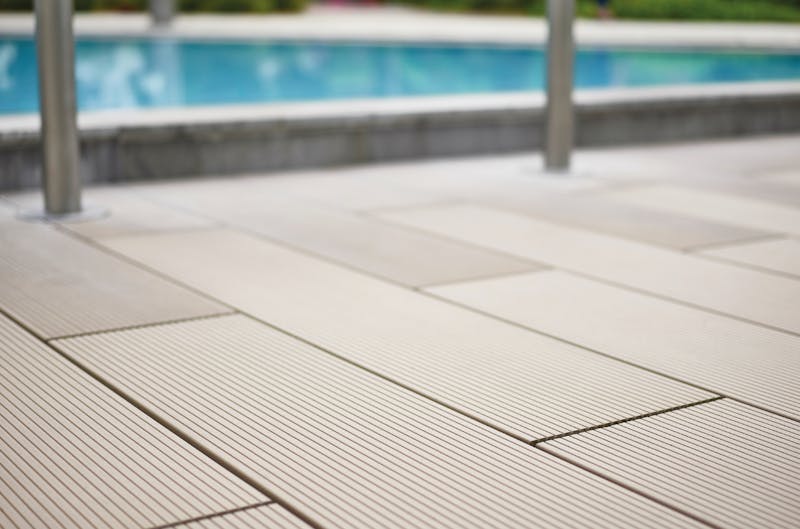6 Creative Ways To Use Terracotta Baguettes In Facade Design

- Blog
- 09/12/2024
- Shildan Group
Blog post by Shildan Group
Introduction
Terracotta baguettes, sometimes referred to as terracotta sunscreens, are revolutionizing the field of exterior design with their high-performance capabilities. These versatile elements offer a blend of functionality and beauty, making them a popular choice among architects seeking innovative solutions for modern buildings.
One of the key reasons architects opt for terracotta baguettes is their sustainability. As a natural material, terracotta is environmentally friendly, and its ability to regulate temperature and sunlight contributes to energy efficiency in buildings. Additionally, their aesthetic flexibility allows for creative facade designs that enhance the visual appeal of structures while providing environmental protection.
Let’s explore some of the creative ways architects are utilizing the unique properties of terracotta baguettes when designing facades. From dynamic patterns to sun control, these elements are redefining how buildings interact with their surroundings.
Hyde Addison Elementary Campus: Shinberg Levinas Architects | Photo: Alan Karchmer
Los Angeles Mission College Student Services Building: QDG Architecture | Photo: Sinziana Velicescu
NCAA Headquarters: Ratio Architects | Photo: Jeff Amram Photography
City Point, NYC: CookFox Architects | Photo: Sinziana Velicescu
Capital Jewish Museum: SmithGroup | Photo: Alex Fradkin
- Download Image

- Download Image

- Download Image

- Download Image

- Download Image
Sunscreen, But Make It Terracotta
The primary use of terracotta baguettes is to function as sunscreens or shading devices. Architects attentively position and orientate terracotta sunscreens to mitigate solar heat gain, ensuring indoor comfort and reduced energy consumption for air conditioning. Notably, terracotta sunscreens produce this effect without compromising natural daylight.
This effect transforms a regular office or residential building into a dynamic, light-filled space that constantly interacts with the sun's movement.
Rhythm and Texture
Terracotta sunscreens add rhythm and texture to the building facade due to their linear shape and modular nature. Depending on their position and patterning, they can create a sense of depth, movement, and three-dimensionality.
When horizontally aligned, they create an illusion of width and spaciousness. When vertically oriented, they add height and grandeur. Diagonal placement can add dynamism and break away from rectilinear forms, while a mix of different orientations can construct intricate geometric patterns.
Whether the goal is discrete elegance or distinctive boldness, subtle changes in pattern can speak volumes in the language of design.
Color Me Terracotta
Terracotta sunscreens are not bound by their natural earthy color—quite the opposite. They embrace a broad palette of colors, allowing architects to experiment cheerfully. From bold hues that pop up to soft pastels that fade in, every color choice aids in shaping the building's character and identity.
Architects use color to add visual interest and make a building stand out or to harmonize it with its surroundings. Combining color with baguettes' linearity and texture can produce a facade that's not just a wall but a canvas showcasing an impressive spectacle of light, shadow, and color.
Lights and Corners
Architects don't restrain terracotta sunscreens to daylight hours or the flatter parts of a facade. They reimagine baguettes with strategic illumination to create stunning nighttime looks. Up-lighting or down-lighting techniques produce dramatic textures by highlighting the baguette's shape, turning the facade into a radiant landmark when the sun sets.
Regarding corners, wrapping around the building helps create a continuous, unified facade. Clever combinations of baguette orientations add visual interest, modulate the building proportions, and make an elegant transition between different faces of the structure.
Not Merely a Wall - It's an Art Piece
In a skilled architect's hands, a terracotta sunscreens facade becomes an ever-evolving work of art. Varying lengths, widths, and cross-section shapes can transform a building into a sea of terracotta waves, a sun-blessed savannah, or an abstract geometric spectacle.
Architects create interesting patterns and images by changing the spacing and arrangement. The front of a building becomes more than just a facade; it becomes a big picture representing the building's character and story.
Building Relationships
Terracotta sunscreens foster relationships between the structure and the environment and between the building and its people. They deliver the unseen yet vital benefits of a sun-shaded, energy-efficient interior while providing an external visual delight. The baguettes' texture, color, and patterns contribute to the building's aesthetics, shaping the perception and experience of the people using, visiting, or even merely passing by the building.
Terracotta Sunscreens Bring Shade and Beauty
Terracotta sunscreens are both functional and beautiful in contemporary architecture. They can be creatively positioned, colored, and illuminated to bring sustainability and beauty to a building's facade. Overall, terracotta sunscreens show that sustainability and charm can coexist on a facade.





